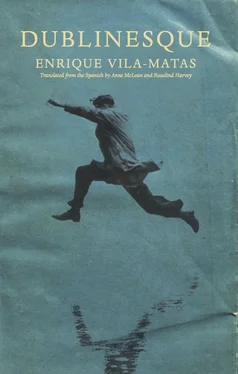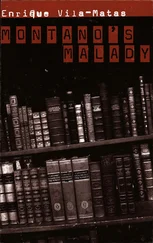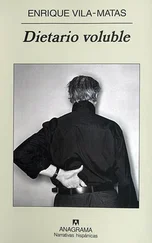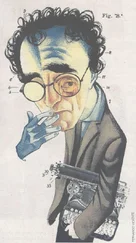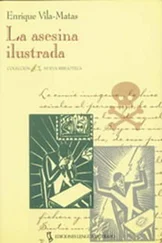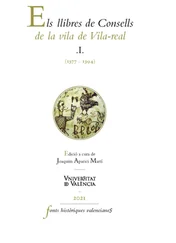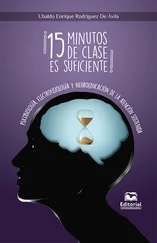“You’d gradually liberate yourself by doing mental exercises,” Celia continues. “And once you understood for real that the I doesn’t exist, you wouldn’t think that the I can be happy, or that your task is to make it happy, you wouldn’t think any of that.”
He thinks that all that remains for her to say is: And don’t get so excited about your trip to Dublin, or your search for enthusiasm and lost genius, or about New York, which represents your hope of abandoning your mediocre life, or about the idea that you’re not that old, or about the English leap.
But being a Buddhist, he wonders, would she be able to say something so incredibly cruel? He prefers to think not. Buddhism isn’t merciless. Buddhism is gentle, Buddhism is good. Isn’t it?
His eyes round as saucers, he’s sitting in front of the computer. He doesn’t know how many hours he’s been here. Relentless insomnia. He gets the impression he’s being observed. Maybe by someone not visible. By someone who has faded into impalpability, whether through death or through a change of manners.
It’s well known that every man shows a different face when he feels he’s being spied on, and now Riba, sensing he might be watched, changes even his gestures. He should go to bed, maybe that’s all it is. Tiredness. It’s almost five o’clock in the morning. He should get some rest, but he’s not convinced it’s the right thing to do. He turns back to the computer.
He discovers via Google that on February 2, 1922, the day his father was born, other things happened in the world. One of them is astonishingly related to a very important event for Dublin. On this day Sylvia Beach, the publisher of Ulysses , was walking restlessly along the platform of the Gare de Lyon in Paris for a long time. Shrouded in the chilly morning air, she awaited the arrival of the train from Dijon. The express arrived at seven o’clock on the dot. And Sylvia Beach ran toward the ticket inspector who was holding a packet and looking for the person to give those first two copies of Ulysses to, sent by the printer Maurice Darantière, who had worked his fingers to the very bone on every correction of every paragraph of every galley that had been crossed out, rewritten, and manhandled to ridiculous extremes. There were the first and the second copies of the first edition, with their Greek blue cover and the title and author’s name in white lettering. It was James Joyce’s birthday, and Sylvia Beach’s present to him would be unforgettable. Perhaps this was one of the great secret moments of the age of print, of the Gutenberg galaxy.
That same day, at the same time that Joyce received his first copy of Ulysses , at a strange age — he’d been in the world a mere four hours — Riba’s father let out a huge resounding grunt, which went right through the walls of the house where he was born.
He writes a really long email to Nietzky to say that every day he feels more predestined to go to Dublin, but in the end he doesn’t send it. He goes back to Google and after looking at a few random pages ends up with the paintings of Vilhelm Hammershøi on the screen, which leave him even more wide awake than he was before. He always finds this Danish artist immensely hypnotic, a man who for his entire career limited himself to a few motifs: portraits of his relatives and close friends, paintings of the inside of his home, monumental buildings in Copenhagen and London, and Sjælland landscapes. He likes these canvases where the same motifs appear again and again. And although their creator projects great peace and calm in all of them, Hammershøi might be reproached for being obsessive. But he thinks that in art this is often precisely what matters, unbridled obsession, the fastidiousness behind the work.
In Hammershøi’s works the painter is always present, with his persistent images circling around his insistent empty spaces, and nothing apparently happens though nevertheless, a lot does — what happens — unlike a subject in a painting by someone like Edward Hopper for example — would never catch on as material for an orthodox novelist. There is no action in his paintings. And without exception, they are all impregnated with a very solid atmosphere: behind the extreme calm and motionlessness, one senses something indefinable and maybe threatening lying in wait.
His palette is very limited and is dominated by a range of gray tones. He’s the painter of what happens when it looks like nothing’s happening. All this turns his interiors into places of hypnotic stillness and melancholic introspection. Happily, in these paintings there is no place for fictions, for novels. One can relax comfortably in them, however much an obsessive mind sweeps over all the canvases.
But what’s more, Riba likes this painter precisely because, in the midst of the lethargic stillness of his empty spaces, everything in him is obstinate, insistent. Hammershøi lives in a permanent state of quiet obsession — to use the title of one of Vok’s books, given in English. The peaceful man’s universe seems to revolve around his restrained fascination.
He has always liked this expression — quiet obsession — coined by Vok’s English translator. Riba also believes he has obsessions of a similar style. His quiet passion for New York, for instance. His tranquil obsession with a funeral in Dublin, with bidding farewell — he doesn’t yet know whether with a gunfire salute or with tears — to the age of print. His tranquil obsession with experiencing one more moment in the center of the world, traveling to the center of himself, and reaching significant degrees of enthusiasm, and not dying of shame after having lost almost everything.
He’s especially gripped by an obsession with The British Museum , the strangest, most obsessive Hammershøi painting he knows. A painting of an almost aggravated gray tone and in which a thick morning fog can be seen spreading down a totally deserted street in Bloomsbury. As in so many paintings by this artist, the canvas has no people in it. It belongs to a series of works by Hammershøi in which foggy, deserted streets in this area of London that must have hypnotized the painter appear with marked insistence.
He’s only set foot in London once, five years ago, when he was invited to a publishers’ conference. He never visited the book fair in this city because he was worried he would feel self-conscious about his non-existent English, so he always used to send Gauger there instead. On this first and only trip to London, he was put up in a little family-hotel in Bloomsbury, next to the British Museum, near the building of the enigmatic Swedenborg Society. The conference meetings took place in a Bloomsbury theater. And during his brief three-day stay he barely had time to look around anywhere other than his hotel and the museum. He got to know the streets of that district so exhaustively that he’s been under the impression ever since that he knows it really well, in depth. This has been his way of trying to take possession of the area. Maybe that is why, when he watched the film Spider , the rundown streets of the East End surprised him, because he didn’t want to accept something as basic as the fact that in London there were areas quite different from Bloomsbury.
On that journey five years ago he took great care not to say to anyone it was the first time he’d visited the city. He knew it would make a terrible impression that a publisher such as himself, with all his prestige, was such a yokel and hadn’t set foot in London, and moreover, had not set foot there purely out of embarrassment at having no idea how to speak English.
On that journey five years ago he carefully and meticulously studied the streets around the British Museum. He walked up and down them many times and ended up memorizing them and when he got home was able, almost immediately, to identify the street in any of Hammershøi’s London paintings he saw, and even knew, almost by heart, the street’s name. This was the case with all the paintings except The British Museum . The same thing happens to him today. It’s strange, but he still loses himself, gets confused, drowns in this painting. The more he sees the street that features in this painting, the less he knows which one must have served as a model for the painter, and the more he wonders if Hammershøi invented it himself. Nevertheless, the bit of the building that can be seen on the left of the canvas must be one side of the museum, and as such, he should recognize this street, which is probably no great mystery and is very possibly a street that exists and that is there — one more quiet obsession, for when he decides to return to London and see it.
Читать дальше
